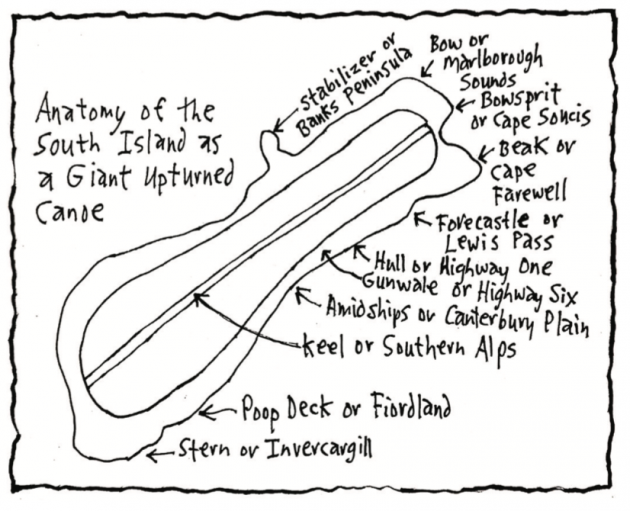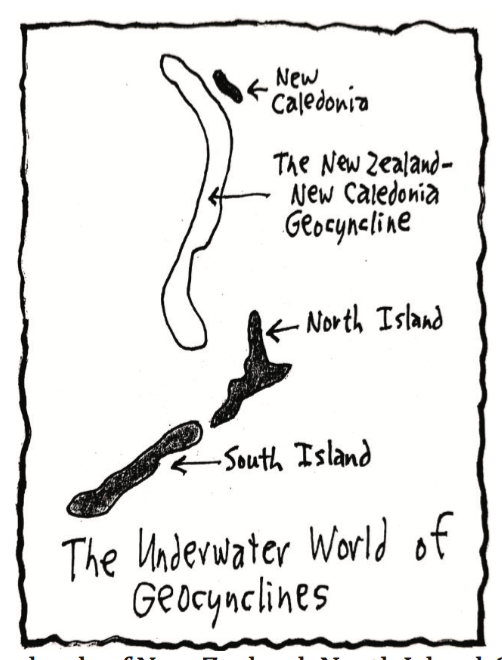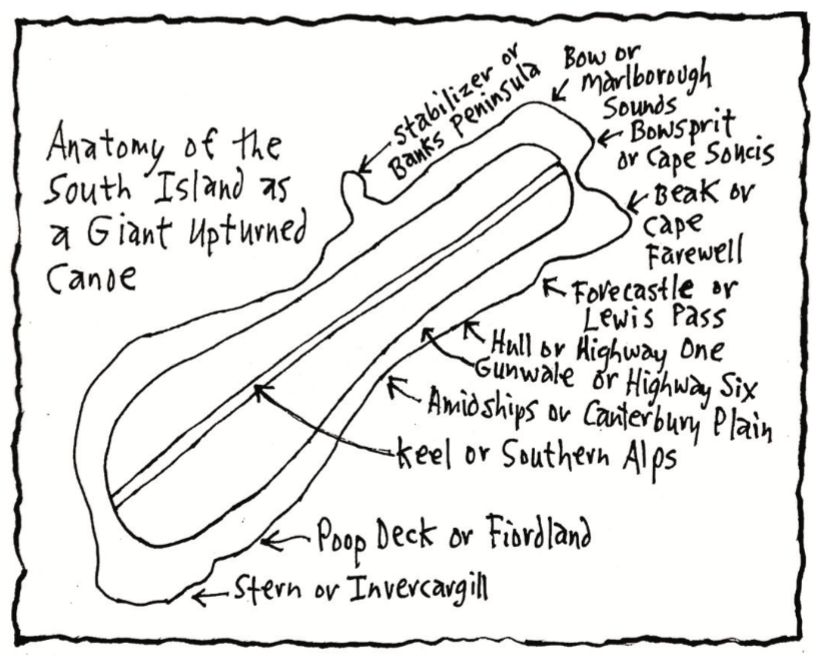Do you remember the days of serialised radio shows and novels? A serial book is a work of fiction or non-fiction that is published in sequential pieces called instalments. These instalments can be published at nearly any interval for nearly any period of time, though weekly and monthly instalments are most typical.
Every Wednesday we will be publishing half a chapter of Nieuw Zeeland An English-Speaking Polynesian Country with a Dutch Name: A Humorous History of New Zealand by Geoffrey Corfield.
It is a MUST read as it has had the infamy of being rejected by non-other than that bastion of balance, Otago University.
Chapter Two: New Zealand is formed.
Maui told his four brothers to stay on the fish while he returned home to find a priest to bless it, but not to touch the fish until he got back. But as soon Maui was over the horizon the brothers began cutting up the fish and eating it. When the Sun came up (it was no friend of Maui and his brothers), it dried out the fish so that it became rock solid and mountainous from all the chunks taken out of it (the mountains of the North Island).
The canoe meanwhile overturned and it’s keel stuck up and also became mountains (the mountains of the South Island). (It is not known how Maui travelled home without the canoe, but he probably swam underwater or was propelled along by his grandmother’s jawbone.)

Later on, Maui, feeling rather pleased with himself over his success at fishing, tried to kill the Goddess of Death by using his grandmother’s jawbone to turn himself into a caterpillar, but the Goddess of Death strangled him and squashed him instead. An inglorious end to one of New Zealand’s first folk heroes.
As a result of what happened to Maui, the islands of New Zealand lay forgotten in The Great Ocean of Kiwa, awaiting the next chapter in the legend entitled: “People Come To New Zealand”. (It is not known what happened to Maui’s brothers marooned on the fish, or the grandmother’s jawbone, and why Maui chose to become a caterpillar of all things.)
The Geology of New Zealand: A Short Summary (contains only a few complicated technical terms and no Maori legends)
New Zealand rocks are quite young in age as rocks go. The North Island rocks are younger than the South Island rocks, and the rocks on the west coast of the South Island are the oldest rocks of all.
The North Island and the South Island of New Zealand may live close together and look like they’re from the same family, but surprisingly they’re not related at all except by marriage. The rocks of the South Island and Stewart Island are thought to be part of the ancient continent of Tasmantis which made up Australia, Antarctica, Tasmania, the South Island of New Zealand, Stewart Island, and an area now beneath the Tasman Sea and the Pacific Ocean.

The North Island of New Zealand is part of the New Zealand-New Caledonia Geosyncline, a large trough in the Earth’s crust that is filling up with rocks making it sink further down.
During the Rangitata-Orogeny Period (a mountain-making period), both the New Zealand part of Tasmantis and the New Zealand part of the Geosyncline were lifted up to create the three main islands of New Zealand: North Island, South Island and Stewart Island. It was really only a fluke that these two forces created these three islands all in a row that look similar but aren’t.
After the Rangitata-Orogeny Period came the Kaikoura-Orogeny Period (an Earth’s crust-moving period), when the earthquake and volcano activity for which New Zealand is well known, and which still continues today, were first created. The earthquakes and volcanoes of New Zealand are caused by the movement of the Earth’s crust.
The surface of the Earth consists of about a dozen or so major moving plates. New Zealand sits in the rather precarious position of being at or near the place where the Indo-Australian plate and the Pacific Plate (the world’s largest plate) meet. But when plates meet they don’t just shake hands politely, they collide into each other. And when they collide one plate either goes over or under the other plate, or they both push up against each other and rise up. Where the Pacific Plate is going under the Indo-Australian plate, this causes the Tongan Islands to rise out of the sea, and the Samoan Islands to sink. Which is what is happening. Where the Indo-Australian plate is going under the Pacific Plate, this causes the Vanuatu Islands to rise, and the New Caledonia Islands to sink. Which is also what is happening.
New Zealand, however, is not only both rising and sinking at the same time, it’s slipping sideways as well. The southwest corner of the South Island used to be along the same latitude line (east-west) as the northeast corner of the South Island; so the South Island is slipping around from the east-west position to the north-south position. At the same time, the Southern Alps of the South Island are still rising. This wholly unstable plate activity under New Zealand is what causes the earthquakes and volcanoes for which New Zealand is famous.
The sea floor surrounding New Zealand is divided into three geological areas called “provinces”: The North-Western Province, the Kermadec Province, and the Chatham Province. These provinces have as yet, however, no representation in the New Zealand Parliament.
Chapter Three Part one: People Come to New Zealand will be published next week.
- Chapter One Part one: A Humorous History of NZ
- Chapter One Part two: A Humorous History of NZ
- Chapter Two Part one: NZ is Formed
If you enjoyed this BFD article please consider sharing it with your friends.

